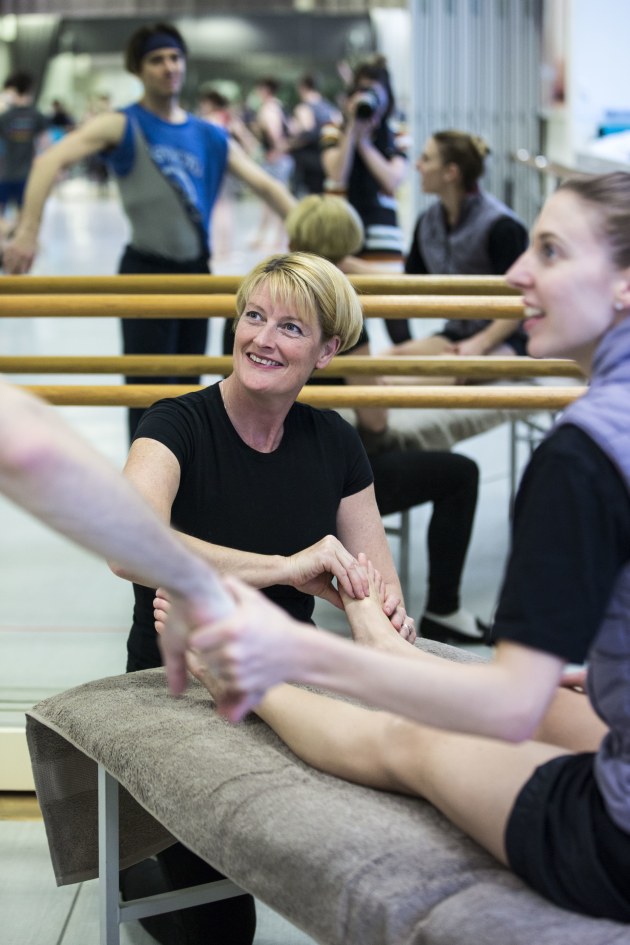The Australian Ballet's miracle medics

In 2015, David Hallberg, the internationally lauded American classical ballet dancer, was in desperate straits. He was suffering an ankle injury that, after much futile treatment including two operations, was still “a swollen red ball” (his words). As he recounts in his recent autobiography, Body of Work, he had two options: either retire, or take his chances and seek treatment with the medical team at The Australian Ballet. He chose the latter. “Everything in New York became a far-off memory,” he writes. “I had flown to the bottom of the world. Now I was in it for the long haul. This was the last-ditch effort.”
He was not wrong. It was seven months before he could jump without using the barre, and two-and-a-half years before he could consider himself fully recovered. That’s a long time in dancer years. But he did recover, where before such an option had seemed hopeless. His gratitude to The Australian Ballet has been naked and public. He even distributed leaflets to the audience at his Australian comeback performances, saying: “The Australian Ballet in its entirety has brought me to this moment I share with you tonight... I am so deeply grateful to David McAllister and the team I have worked so intimately and extensively with... They have not only nurtured me back to health physically but in true Aussie form, they have opened their hearts and, through their generosity, given me an artistic rebirth.”
The AB medical team to which he owes his rebirth consists of a multidisciplinary group of experts. Principal physiotherapist Sue Mayes recently gained her PhD in research at LaTrobe University (and is currently researching ankle and hip-joint injuries in professional ballet dancers as part of the partnership between The Australian Ballet and La Trobe University). She is joined by body conditioning specialist Paula Baird, ballet mistress and rehabilitation specialist Megan Connelly, strength and conditioning instructor Sakis Michelis (all former dancers themselves) as well as other physiotherapists, myotherapists, a sports and exercise physician and a general practitioner.
In addition to the in-house team, the company employs externally a consultant psychologist, podiatrist, dietitian and surgeon. Together they pool their expertise to create a co-ordinated dream-team of medical miracle makers.
It hasn’t always been thus. Until the introduction of an in-house medical team, the dancers had to seek treatment outside the company. Injuries were rife. The combination of the AB’s busy schedule (one of the world’s busiest), touring obligations and the increasing athleticism of contemporary classical choreography was playing havoc with the dancers’ bodies. The injury rate was obviously bad for morale and bad for performance standards. Furthermore, the company’s WorkCover premiums were soaring.
In response, the company appointed a sports and exercise physician, (the late) Ken Crichton, as medical director, in 1994. This in itself was an acknowledgement that medical expertise from the sports world could be helpful to dancers. Mayes was appointed as the company’s first full-time in-house physio in 1997. A second followed in 2002. As the pool of expertise grew, the approach to the prevention of injury and rehabilitation became increasingly sophisticated and effective. With the company’s resources properly dedicated to their dancers’ health and welfare, the rate of injuries began to decrease.
Today, dancers no longer just “swing a leg” to get warm or throw on a pair of legwarmers to “stay warm” after a show. Instead, the team has adapted and implemented many high-level sports’ practices to the dancers’ warm-up and cool-down regime. Dancers will immerse their bodies in ice after strenuous performances and use hot and cold spas for recovery. Weight and resistance training is used as preventative and rehabilitative exercise, for both men and women. Pilates also plays a big role, as well as myriad exercises devised by the team’s combined brain power. This year, a huge new medical facility is being constructed at the AB’s headquarters in Melbourne, with a consulting room and gym and work-out areas.. . .
This is a sneek preek of the full article in the April May issue of Dance Australia.
Read it, touch it, keep it! And all for a mere $8.50. Buy the new issue at your favourite magazine retailer or purchase an online copy via the Dance Australia app or subscribe here.


